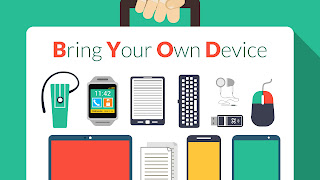Twitter Feed
Why the Cloud? Processing, Exploitation and Dissemination
So why is the intelligence community so interested in cloud computing? Three letters: PED (Processing, Exploitation, Dissemination). Take these two real life examples from the publishing industry. Jim Staten of…
World Summit of Cloud Computing: “Enterprise Cloud Computing” work group
To leverage attendees of the World Summit of Cloud Computing, a kick-off meeting of the “Enterprise Cloud Computing” work group will be held near Tel Aviv, Israel on December 3,…
Cloud Package Management
In his post “Missing in the Cloud: package management“, Dave Rosenberg highlights a critical issue in the adoption of cloud computing by government agencies. “I dare say that a standard…
PlugIntoTheCloud.com
Information Week has just launched PlugIntoTheCloud.com as their cloud computing destination. In his Non Linear Thinking blog, Bill Martin calls it a movement aimed at “providing a source and forum…
Is the cloud computing hype bad?
From Gartner “Why a little cloud hype might be useful“: “It’s too simplistic to say cloud hype is bad . If we are technically expert is might irritate us with…
Stop the FUD (Fear, Uncertainty and Doubt) !!
Dan Morrill! Count me in !! In his excellent article, “Cloud Computing is Scary – But the FUD Has to Stop“, Dan makes some excellent points: It is time to…
IBM, Microsoft and Google
On October 6th, IBM launched their cloud services initiative. This is a: “[C]ompany-wide initiative that extends its traditional software delivery model toward a mix of on-premise and cloud computing applications…
Government in the Cloud
Back in mid-September, there was quite a thread in the Google Cloud Computing Group on the use of cloud computing by the federal government. Some of the interesting comments were:…
CloudCamp Partners With SOA-R !!
I’m proud to announce that the final SOA-R Cloud Computing Education Event will be held in collaboration with CloudCamp. Now dubbed CloudCamp:Federal, the event will be held as an “unconference” to help…
Federal Cloud Computing Wiki
With the fast growing interest in cloud computing, the Federal Government community has established a Federal Cloud Computing Wiki. This wiki is managed by Dr. Brand Niemann, Senior Enterprise Architect…
- Increased employee mobility (63%), satisfaction (56%) and productivity (55%) dominate as the top drivers of BYOD. These employee related drivers are considered more important than reduced costs (47%).
- Security (39%) and employee privacy (12%) are the biggest inhibitors of BYOD adoption.
- 20% of surveyed organizations have suffered a mobile security breach, primarily driven by malware and malicious WiFi.
- Security threats to BYOD impose heavy burdens on organizations’ IT resources (35%) and help desk workloads (27%).
- Despite increasing mobile security threats, data breaches and new regulations, only 30% of organizations are increasing security budgets for BYOD in the next 12 months and 37% have no plans to change their security budgets.
- 72% – Data leakage/loss
- 56% – Unauthorized access to company data and systems
- 54% – Downloading of unsafe apps or content
- 52% – Malware
- 50% – Lost or stolen devices
- 49% – Vulnerability exploitation
- 48% – Lack of control on endpoint security
- 39% – Infrequent software updates
- 38% – Compliance
1. Create your policy before procuring technology: To effectively use mobile device management (MDM) technology for employee owned devices Policy must precede technology. Also note that these policies will have broad corporate-wide implications for IT, HR, legal, and security.
- Mobile device management
- Application security assessments
- Application testing services
- Application source code security assessments; and
- Embedded device security.
This post was brought to you by IBM Global Technology Services. For more content like this, visit ITBizAdvisor.com.
( Thank you. If you enjoyed this article, get free updates by email or RSS – © Copyright Kevin L. Jackson 2017)
Cloud Computing
- CPUcoin Expands CPU/GPU Power Sharing with Cudo Ventures Enterprise Network Partnership
- CPUcoin Expands CPU/GPU Power Sharing with Cudo Ventures Enterprise Network Partnership
- Route1 Announces Q2 2019 Financial Results
- CPUcoin Expands CPU/GPU Power Sharing with Cudo Ventures Enterprise Network Partnership
- ChannelAdvisor to Present at the D.A. Davidson 18th Annual Technology Conference
Cybersecurity
- Route1 Announces Q2 2019 Financial Results
- FIRST US BANCSHARES, INC. DECLARES CASH DIVIDEND
- Business Continuity Management Planning Solution Market is Expected to Grow ~ US$ 1.6 Bn by the end of 2029 - PMR
- Atos delivers Quantum-Learning-as-a-Service to Xofia to enable artificial intelligence solutions
- New Ares IoT Botnet discovered on Android OS based Set-Top Boxes


